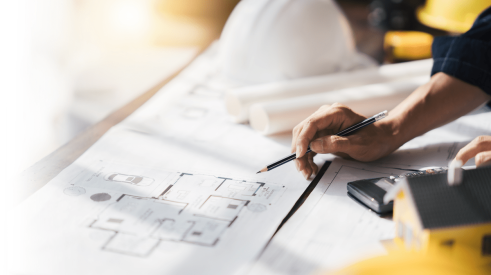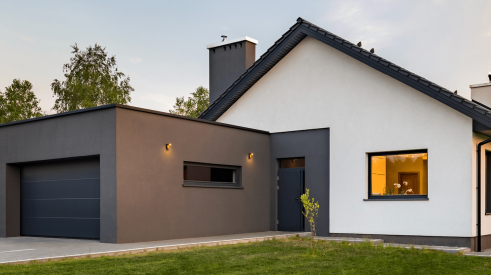Affordability is a pressing issue in our industry. Increasing construction costs and rising interest rates are making it more difficult for prospective homebuyers to afford new homes.
Many builders have turned to value engineering (VE) to reduce the cost of building but fail to realize that VE can be used to alleviate other pressures on affordability as well. In fact, VE was conceived to increase value, not to take everything of value out of the home to make it cheaper to build. That’s why it’s called value engineering and not “devalue engineering” or “undervalue engineering.”
Simply, and more accurately, a successful VE initiative aligns your product attributes with those your target customer perceives as having high value.
Value Engineering and the Customer
To do VE right, you must know what your customers value in a home. Start with market research from both internal and external sources to really understand your buyers and how they live in a home. Investigate current consumer lifestyle and purchasing trends and conduct focus groups of current customers and prospects who have walked your models (online or in person) but have not bought. What did they like? What didn’t they like? What were they indifferent to? And, most importantly, listen to what they say—without judgment or debate—because the goal is to find out if you’re including features in your homes that you perceive to be of value but your customers don’t.
Equipped with this knowledge, you can confidently look for ways to align your product with their needs without increasing the home’s net cost, which is the true intent of value engineering.
Next, share what you discover with all of the key stakeholders in your operation, including: the architect and structural engineer to inform the design process; salespeople who are closest to the customer; purchasing agents who source materials and construction labor; product manufacturers and their supply chain members; trade partners that build your homes; field managers who supervise construction; and customer service representatives who field service calls.
Use this team and your collective knowledge about customers to improve efficiency, eliminate waste, and build real value in your production process. Specifically, apply VE by considering solutions such as whole-house framing, alternative materials, material utilization, and standardization.
Value Engineering Through Whole-House Framing
Start by looking at the home as a system instead of just the sum of its parts. For example, the foundation, floor, wall, and roof systems must operate as one unit, literally supporting one another to deliver a solid, reliable structure.
Also, find a structural engineer who understands efficient framing techniques. You want someone who seeks out opportunities to reduce waste and add value by looking at the whole structure as a system rather than using a prescriptive method or taking an individual-component approach.
 For instance, advanced framing techniques provide proven ways to build stronger homes using less lumber. Consider spacing 2x6 studs 24 inches on-center and eliminating redundant studs, using single top plates on non-load-bearing walls, and using single headers and two-stud corners.
For instance, advanced framing techniques provide proven ways to build stronger homes using less lumber. Consider spacing 2x6 studs 24 inches on-center and eliminating redundant studs, using single top plates on non-load-bearing walls, and using single headers and two-stud corners.
Keep in mind, too, that dimensional lumber has an insulating value of roughly R-1 per inch, so an over-framed home is not energy efficient; a value-engineered, advanced-framed home, however, creates more opportunities for higher R-value insulation materials and thus better occupant comfort and greater energy savings—two highly valued benefits.
The Role of Alternative Materials in Value Engineering
It may make sense to pay more for materials if they last longer, require less labor to install, eliminate rework, or provide value in other ways, such as indoor comfort and health benefits.
For example, fiber-cement shake-style siding is more expensive than natural wood shake cladding, but you can buy it in panels to reduce installation labor and scrap waste. It also lasts longer and won’t cup, split, twist, or bow, thus reducing warranty calls and rework that undermine your profit margin.
But it may also make sense to pay less for certain materials. For instance, replacing a well-advertised brand of bathroom fixtures and fittings with a less-advertised brand of equivalent or better quality is a win if your buyer doesn’t value the better-known brand.
That’s something you won’t know until you do deep research about the alternatives and talk with your customer well before their visit to the design studio. But the lesson is not to assume customers want a particular brand simply because a manufacturer’s sales rep tells you they do. A known brand may be important to me or you, but that’s not true for everyone. Given the choice between a well-advertised brand and an additional included feature resulting from a lesser-known spec, your customer may choose the latter.
Material Utilization and Value Engineering
There is no value in a full dumpster. You’re paying twice for everything that goes in there. First when you bought it and again when you paid to have it hauled away. And you aren’t doing the environment any favors, either.
To reduce waste and the associated cost, design rooms based on standard dimensions of materials, such as drywall, OSB floor sheathing, trim lengths, carpet roll widths, standard tile sizes, and others. Excessive cutting of materials consumes precious labor resources and creates scrap that’s often just thrown away.
Another VE tip: Keep slab sizes in mind when designing kitchen and bathroom counter runs. You’ll pay for full slabs whether you use their entire length or not, so it may be smart to alter the length of a cabinet run or island to fully utilize a slab, or use a cut section somewhere else, such as for a bath vanity or coffee station.
Material utilization considerations also apply to your options program. By offering different kitchen and bathroom countertops as separate upgrades, you’re preventing your trade from using slab remnants across multiple rooms. In other words, you’re paying for a full slab in a bathroom, even if you only need a partial slab that could have been shared with another bath or the kitchen.
How Standardization Helps Value Engineering
Try to use products that are readily available in the marketplace, such as standard window sizes rather than custom or special-order windows that cost a premium. Standard window sizes also allow homebuyers to purchase off-the-shelf blinds and window coverings rather than making special orders.
In addition, look to reduce the number of different SKUs you use in a home and think about the impact on the supply chain to deliver them. If manufacturers can make more product of the same size, it enables them to reduce setup time and improve production efficiency; it’s also easier to pack and ship. Plus, the local distributor or dealer can sometimes ship your product on the same pallet as it was received, versus wasting labor to break down every pallet and repack it for your jobsite.
Other things to consider. Avoid skimping on features that would be difficult for the buyer to add later. For example, it’s far easier for homebuyers to upgrade a basic landscape package after closing than it is to increase the insulation in their walls to achieve greater comfort and energy savings. If it is something homeowners value, make that investment for them ... and let them know you did.
You can also provide everything a buyer wants through an options upgrade program, rather than including it all in the base home (with the caveat mentioned in the material utilization section above), allowing a buyer to personalize the home. Unless you’re certain your target customer wants a particular feature included in their home, you’re better off putting it in your options program. Don’t make buyers pay for included features they don’t want.
Value engineering can be a great tool to align your product with your target customers, while actually making a home more affordable for them to buy. If you have items you want to add to the house, look for those you can easily take out to keep the home affordable. Remember to involve all of the key stakeholders, do your research, and follow the above practical steps in your next project.
Advertisement
Related Stories
Business Management
How to Improve Home Building Productivity, Part 1: Simplify, Standardize
Simplifying and standardizing your processes and purchasing creates efficiencies that save money and time and attract the best trade partners
Lean Building
How to Optimize Your Plan Portfolio and Gain an Edge on the Competition, Part 1
To stay ahead of the competition, simply value engineering your homes is not enough. Adopt a performance-based mindset
Market Data + Trends
Home Exteriors See Value Engineering by Home Builders
To contend with current cost pressures, home builders are taking steps to value engineer the exteriors of their homes








